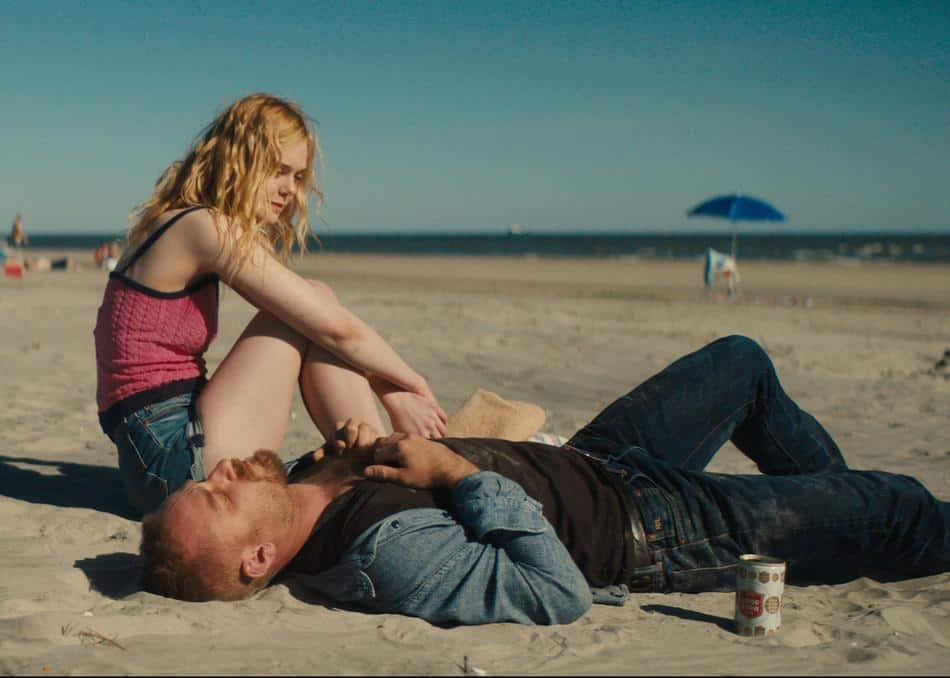
There may be plenty of familiar beats in Mélanie Laurent’s film, but ‘Galveston’ proves the right performers can make any tune dance.
Here’s to films about sad-sack professional killers and the sex workers they love. For decades now, Hollywood has been telling elegiac stories of people on the run from lives of violence. Over time, this narrative has become cinema’s answer to the jazz standard, a familiar conceit that gives its performers ample opportunity to show off their own individual style. Mélanie Laurent’s Galveston is one such example within the genre; while there’s a thread of familiarity throughout the movie, her steady hand and the powerful performances of her leads give Galveston its own alluring sense of self.
Roy Cady (Ben Foster) is dying. A lifelong smoker, Cady has just been given a terminal diagnosis by his doctor, and what little life Cady has cobbled together in New Orleans seems suddenly unimportant in light of his illness. He doesn’t care, for example, that his employer (Beau Bridges) seems to have stolen his girlfriend out from underneath him, but his boss cares, quite a bit, and would like to speed up Cady’s exit from this world. That’s why Cady is suspicious when he is told to intimidate a local lawyer but not to bring a gun; in the inevitable firefight, Cady leaves behind three dead bodies and gains Rocky Arceneaux (Elle Fanning), a sex worker whose only real sin is that she was in the wrong place at the wrong time.
After the two manage to calm their nerves with a few shots of whiskey – “Cheer up. You’re alive. I’m buying.” – Arceneaux and Cady head out west, stopping on the Louisiana border to pick up her little sister along the way. Before long, they find themselves in the poorest part of Galveston, Texas, not sure what to do next but knowing their time together is probably limited. With nothing to lose and not much time left among the living, Cady begins looking for ways to potentially set up Arceneaux and her sister when he’s gone.
Few actors embody the threat of violence quite like Ben Foster. From his recent supporting roles in Hostiles and Hell or High Water – not to mention his off-Broadway stint as Stanley Kowalski in A Streetcar Named Desire – Foster seems born to play the abuser, a man hellbent on punishing those around him for the injustices he feels he’s been offered by the world. This sometimes leads us to forget Foster’s nuance as an actor. Foster finds little moments of fragility amidst the bravado and outrage; in one scene, for example, he contemplates a cigarette before choosing to light it, making a clear decision to embrace his end when it occurs.
And then there’s Elle Fanning. Those familiar with her work in The Neon Demon know that Fanning possesses uncanny depth for an actress her age. With Arceneaux, she convincingly moves between innocence, innocence lost, and a calculated innocence that she uses to earn the trust of those around her. Galveston is cruel to Arceneaux, as it is to most of its characters, but Fanning’s performance keeps her character from ever falling into cliche. To borrow a phrase from another story set in Texas, there is a part of herself that she keeps just for herself; she has power, even if it’s just in the tough decisions she makes to keep ends together.
Galveston also presents an authorial puzzle for those willing to do the work. Rody Cady is unquestionably a character born from the mind of author Nic Pizzolatto; abusive, drunk, and quietly self-destructing, Cady possesses many of the characteristics we recognize from True Detective, the series that catapulted Pizzolatto to stardom (and just as quickly became his downfall with a lackluster Season 2). But unlike the characters in that series, Cady is deprived his victimhood by the women around him. His ex-girlfriend and the manager of his motel both see through Cady’s facade, and Rocky’s relationship with Cady is given a degree of independence by Fanning’s powerful performance. It’s hard not to wonder where Pizzolatto ends and where Laurent begins in the narrative. Galveston will undoubtedly make for a fine dissertation on adaptation one day.
And what of Galveston itself? Outside of the film’s ill-conceived framing device of an impending hurricane, Galveston’s story is well-matched to its coastal setting. This is a city that has been wiped away by countless storms, only to rebuild unevenly across economic lines; at times, Galveston feels more like a movie borrowing from The Florida Project than a traditional crime thriller. Laurent delves into the poorest parts of the city to shoot her film – one particular tracking shot is like a guided tour of economic anxiety – allowing Galveston a sense of location unique to many of its peers. If Galveston is indeed just another hoary standard, then it proves more about the talent of the performer than the quality of the song. No noir can truly disappoint when you’ve got East Texas on your side.
Related Topics: Ben Foster, Elle Fanning, Galveston, Melanie Laurent

